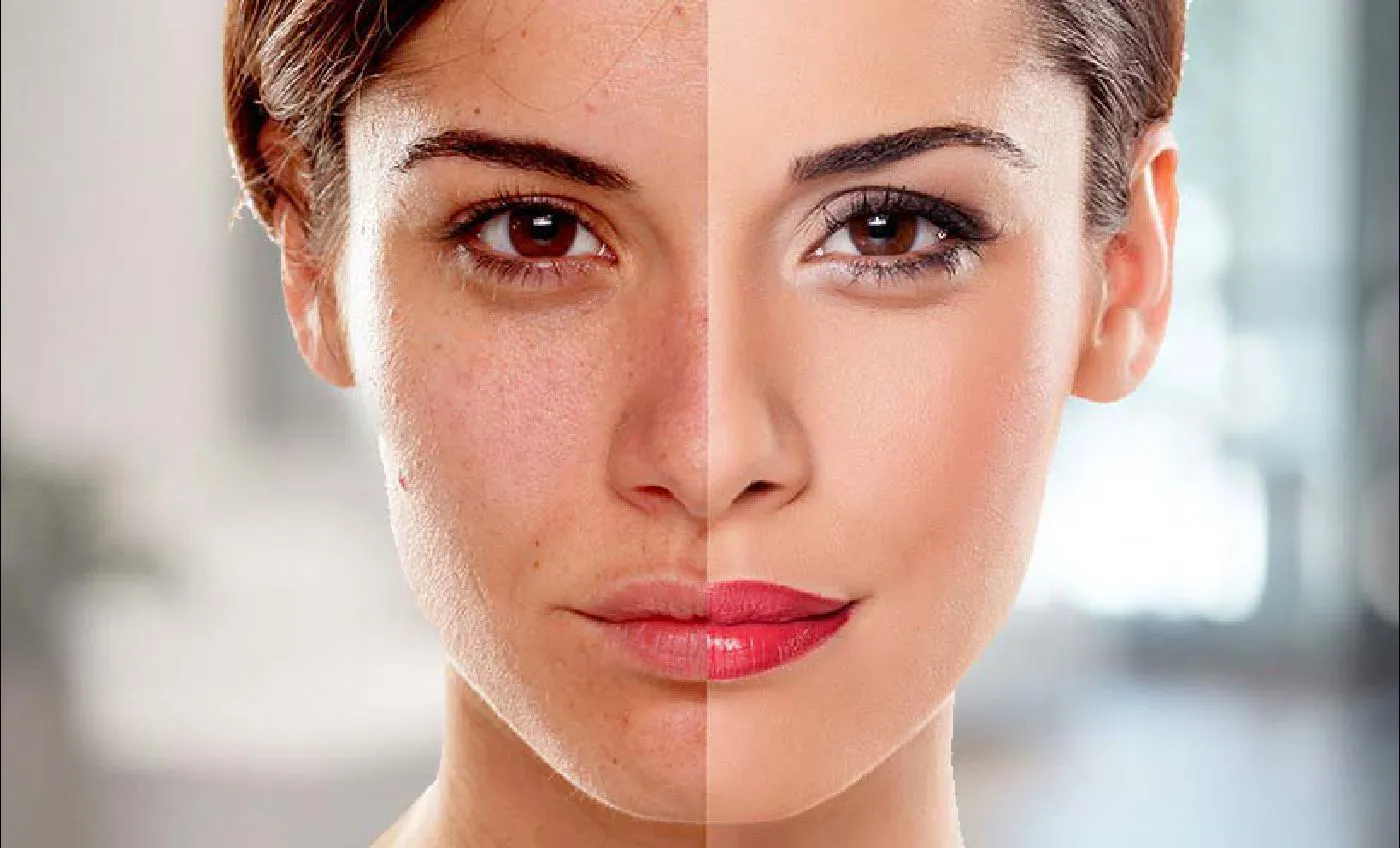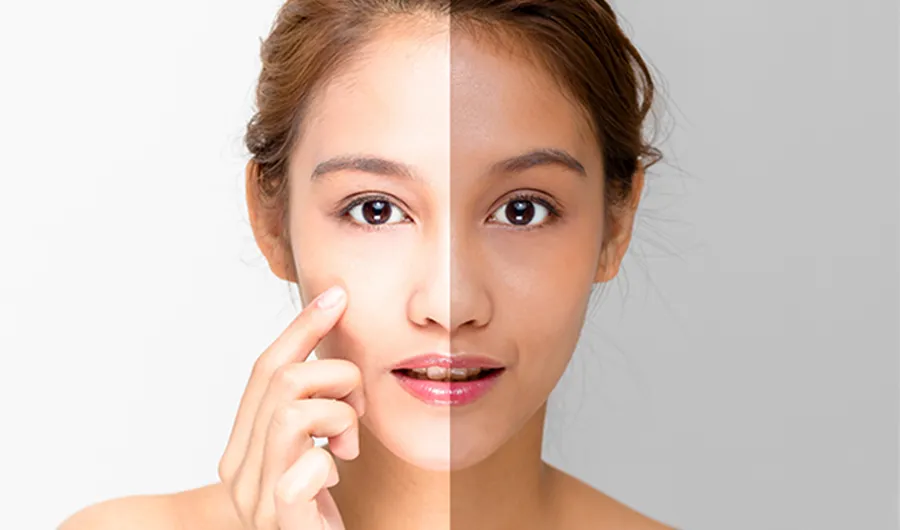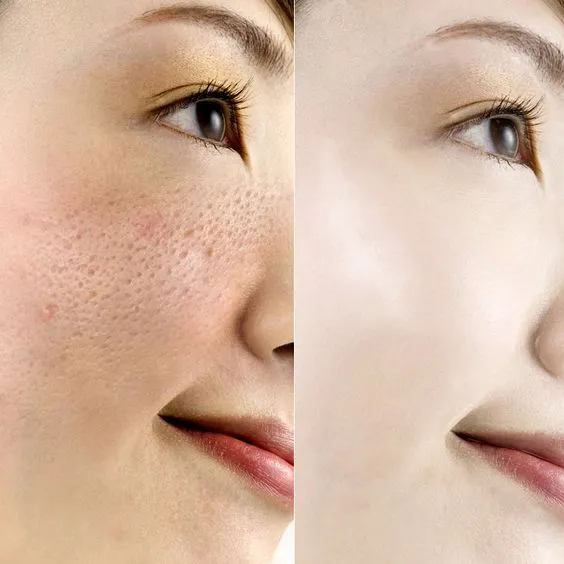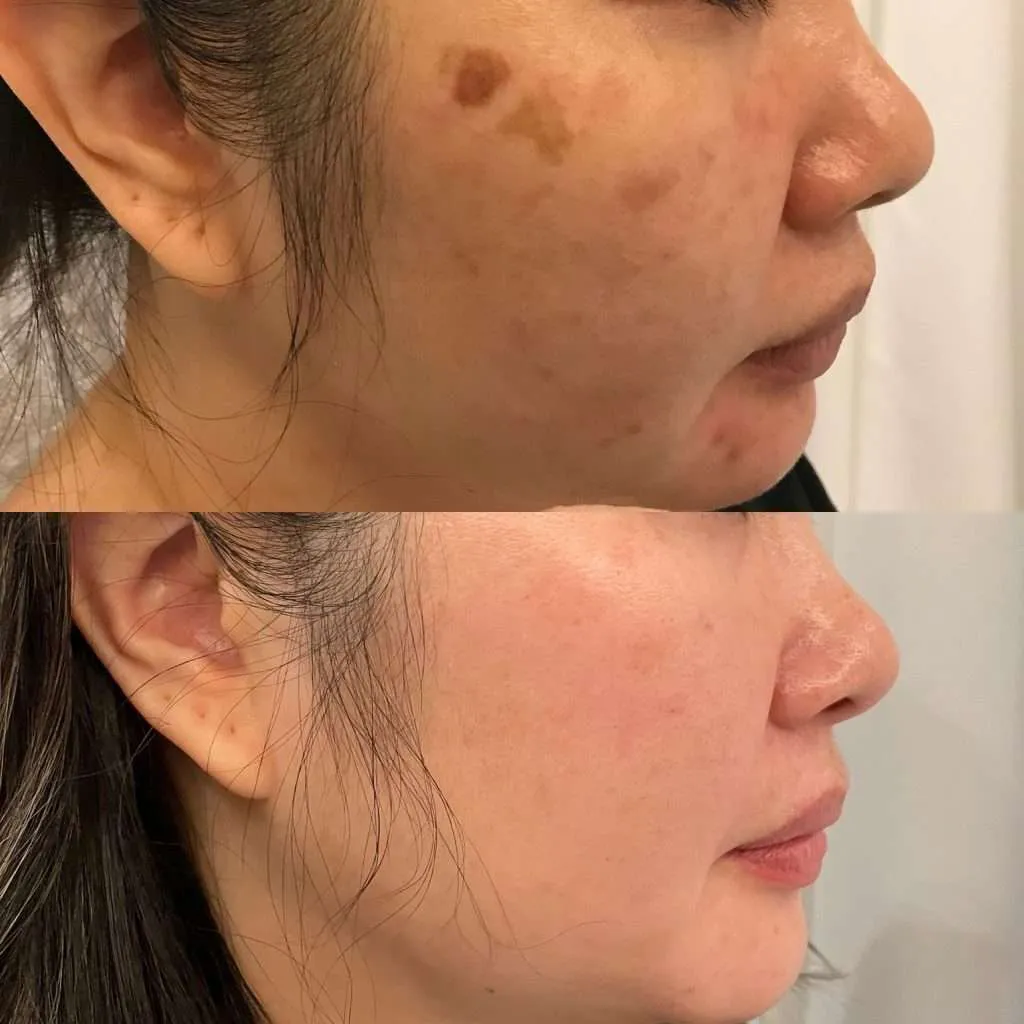Top 5 Causes of Skin Discoloration
Skin whitening, the process of lightening areas of skin or achieving a more even skin tone, is a widespread concern across the globe. Understanding the underlying causes of skin discoloration is the first step towards effective treatment and prevention. Several factors contribute to the darkening or unevenness of skin, ranging from environmental influences to internal bodily changes. Recognizing these causes can empower individuals to make informed decisions about skincare routines and seek appropriate medical advice when necessary. This article delves into the top five primary causes of skin discoloration, providing insights into their mechanisms and potential solutions. The goal is to equip you with knowledge so you can improve your skin’s health and achieve the desired complexion.
Sun Exposure and Hyperpigmentation
Sun exposure is the leading culprit behind many skin discoloration issues. The sun’s ultraviolet (UV) rays stimulate melanocytes, the cells responsible for producing melanin. Melanin is the pigment that gives skin its color, and increased production leads to tanning. However, excessive or unprotected sun exposure can result in hyperpigmentation, where certain areas of the skin become darker than others. This can manifest as sunspots, freckles, or uneven skin tone. The cumulative effect of sun damage over time accelerates aging, increasing the risk of skin cancer. Therefore, protecting your skin from the sun is crucial for maintaining an even complexion and preventing premature aging.
How UV Rays Affect Skin Pigmentation

UV rays, particularly UVA and UVB, penetrate the skin and trigger melanocytes to produce more melanin. UVB rays primarily cause sunburn, while UVA rays contribute to long-term skin damage and aging. Both types of UV radiation lead to the development of hyperpigmentation. When the skin is exposed to sunlight, it naturally attempts to protect itself by producing more melanin, resulting in a tan. However, prolonged or intense sun exposure overwhelms the skin’s protective mechanisms, leading to an overproduction of melanin in certain areas. This uneven distribution of melanin causes dark spots and patches. Regular sun protection is essential in mitigating these effects.
Preventing Sun-Induced Skin Darkening
Preventing sun-induced skin darkening involves several key strategies. First and foremost is the consistent use of broad-spectrum sunscreen with an SPF of 30 or higher. Apply sunscreen liberally and reapply every two hours, especially when outdoors. Seek shade during peak sun hours (typically between 10 a.m. and 4 p.m.). Wear protective clothing, such as long sleeves, pants, and a wide-brimmed hat, to minimize direct sun exposure. Consider the use of sun-protective clothing. Regular use of these protective measures is a cornerstone in preventing and minimizing sun-induced skin discoloration and maintaining healthy, radiant skin.
Inflammation and Skin Whitening
Inflammation plays a significant role in skin discoloration. Conditions that cause inflammation, such as eczema, acne, and injuries, can trigger the overproduction of melanin. This phenomenon is known as post-inflammatory hyperpigmentation (PIH). Inflammation damages the skin’s cells, and as the skin heals, melanocytes become overactive in the affected area. This results in dark spots or patches that can persist for weeks or even months. Managing inflammation effectively is, therefore, critical for preventing and treating skin discoloration related to inflammatory conditions. It is important to address the underlying cause of the inflammation.
Post-Inflammatory Hyperpigmentation (PIH)

PIH is a common condition where areas of the skin become darker after inflammation or injury has healed. It can occur after acne breakouts, eczema flares, or even minor cuts and scrapes. The intensity of PIH varies depending on the individual’s skin type, the severity of the inflammation, and how quickly the inflammation is resolved. People with darker skin tones are more prone to developing PIH due to having more active melanocytes. Treating PIH often involves using topical creams containing ingredients like hydroquinone, retinoids, or kojic acid, along with consistent sun protection.
Treatments for PIH
Several treatments can help manage PIH. Topical treatments, such as creams containing hydroquinone, retinoids, azelaic acid, and kojic acid, work to lighten the affected areas by reducing melanin production. Chemical peels and microdermabrasion can also be effective by exfoliating the skin and removing the darkened cells. Laser treatments, like fractional lasers, can target the excess melanin and promote collagen production. It is important to consult a dermatologist to determine the most appropriate treatment plan based on your skin type, the severity of PIH, and other individual factors. Consistent sun protection is essential throughout the treatment to prevent further darkening.
Hormonal Changes and Skin Whitening
Hormonal fluctuations, especially in women, can significantly impact skin pigmentation. Hormonal imbalances can trigger an overproduction of melanin, leading to conditions like melasma. Melasma is characterized by brown or gray-brown patches, usually appearing on the face. Hormonal changes during pregnancy, menopause, or as a result of hormone replacement therapy often exacerbate melasma. Managing hormonal imbalances through lifestyle adjustments or medical interventions is essential in controlling and preventing skin discoloration. Understanding the link between hormones and skin health is a key factor in an effective skin-whitening plan.
Melasma Causes and Management

Melasma is primarily caused by hormonal changes and sun exposure. Genetics also play a role, as it tends to run in families. The condition often appears as symmetrical patches on the forehead, cheeks, upper lip, and chin. Managing melasma involves a combination of approaches, including strict sun protection, using topical treatments, and, in some cases, undergoing procedures like chemical peels or laser therapy. Topical treatments often include hydroquinone, retinoids, and corticosteroids, which are often used in combination. It is important to use these treatments under the guidance of a dermatologist. Regular use of sunscreen is critical to prevent melasma from worsening.
Pregnancy and Skin Whitening
During pregnancy, hormonal changes can significantly affect skin pigmentation. The increase in estrogen and progesterone can stimulate melanin production, leading to melasma (also known as the ‘mask of pregnancy’) and other forms of skin discoloration. The darkening often fades after delivery, but sometimes treatment is needed to help the skin return to its normal complexion. Protecting the skin from the sun is particularly important during pregnancy to minimize the effects of hormonal changes on skin pigmentation. It is best to consult a dermatologist about safe and effective treatments during and after pregnancy, as some ingredients are not recommended during this time.
Skin Conditions and Skin Whitening
Several skin conditions can lead to skin discoloration. Understanding these conditions can help you effectively manage the symptoms and find appropriate treatment. Conditions such as eczema and acne, for example, can lead to uneven skin tone, and their impact extends beyond the primary symptoms. Early intervention and proper management of these conditions are essential to prevent or minimize skin discoloration. Knowing how specific skin diseases impact the skin and their potential to cause darkening or lightening of the skin is very important for maintaining healthy skin.
Eczema and Skin Whitening

Eczema, or atopic dermatitis, is a chronic inflammatory skin condition that can cause skin discoloration. The inflammation associated with eczema can trigger the overproduction of melanin, leading to PIH. Additionally, scratching the itchy skin can cause further irritation and contribute to skin darkening. The affected areas may appear darker or lighter than the surrounding skin. Managing eczema involves controlling inflammation through topical corticosteroids, emollients, and, in some cases, systemic medications. Avoiding triggers and maintaining a consistent skincare routine is crucial in preventing skin discoloration. The goal is to keep the skin hydrated and reduce inflammation.
Acne and Skin Whitening
Acne, another common skin condition, is also a significant contributor to skin discoloration. Acne lesions, such as pimples and cysts, cause inflammation that can lead to PIH. Picking or squeezing pimples can worsen inflammation and increase the likelihood of dark spots. The resulting dark spots can persist for weeks or even months after the acne clears. Effective acne treatment, including topical treatments with benzoyl peroxide or retinoids, can help to prevent new acne breakouts. Additionally, proper skincare habits, such as gentle cleansing and avoiding picking at spots, can help minimize the risk of PIH and help maintain a clear complexion.
Genetics and Skin Whitening
Genetics play a fundamental role in determining skin tone and the predisposition to skin discoloration. The amount of melanin produced by melanocytes is largely determined by genetic factors. People with darker skin tones naturally produce more melanin than those with lighter skin tones. Genetic predispositions can make certain individuals more vulnerable to developing skin discoloration from sun exposure, inflammation, or hormonal changes. Although you cannot change your genetic makeup, understanding your genetic predisposition to skin darkening is important for customizing your skincare routine and treatment approaches.
The Role of Genetics in Skin Tone

Genetics influence the production, distribution, and type of melanin, which directly affects skin tone. Genes control the number, size, and activity of melanocytes. Variations in these genes explain the diverse range of skin tones seen across different populations. For example, certain genes associated with melanin production can make individuals more susceptible to conditions like melasma or PIH. Understanding the genetic component of skin tone and discoloration is crucial for developing personalized skincare strategies and setting realistic expectations about skin whitening outcomes. You should consider your family history and skin type when considering skin whitening treatments.
Managing Genetic Predisposition to Darkening
Managing a genetic predisposition to skin darkening involves several proactive measures. Sun protection is paramount, regardless of your genetic background. Consistent use of sunscreen, protective clothing, and seeking shade can minimize the impact of UV rays on skin. Incorporating antioxidants into your skincare routine can help combat free radicals, which can contribute to skin damage and discoloration. Regular exfoliation can also help to remove dead skin cells and promote a more even skin tone. Consulting with a dermatologist is highly recommended to develop a customized skincare plan that addresses your specific genetic predispositions and helps to maintain healthy, radiant skin. Additionally, be patient, as it can take time to see results.
